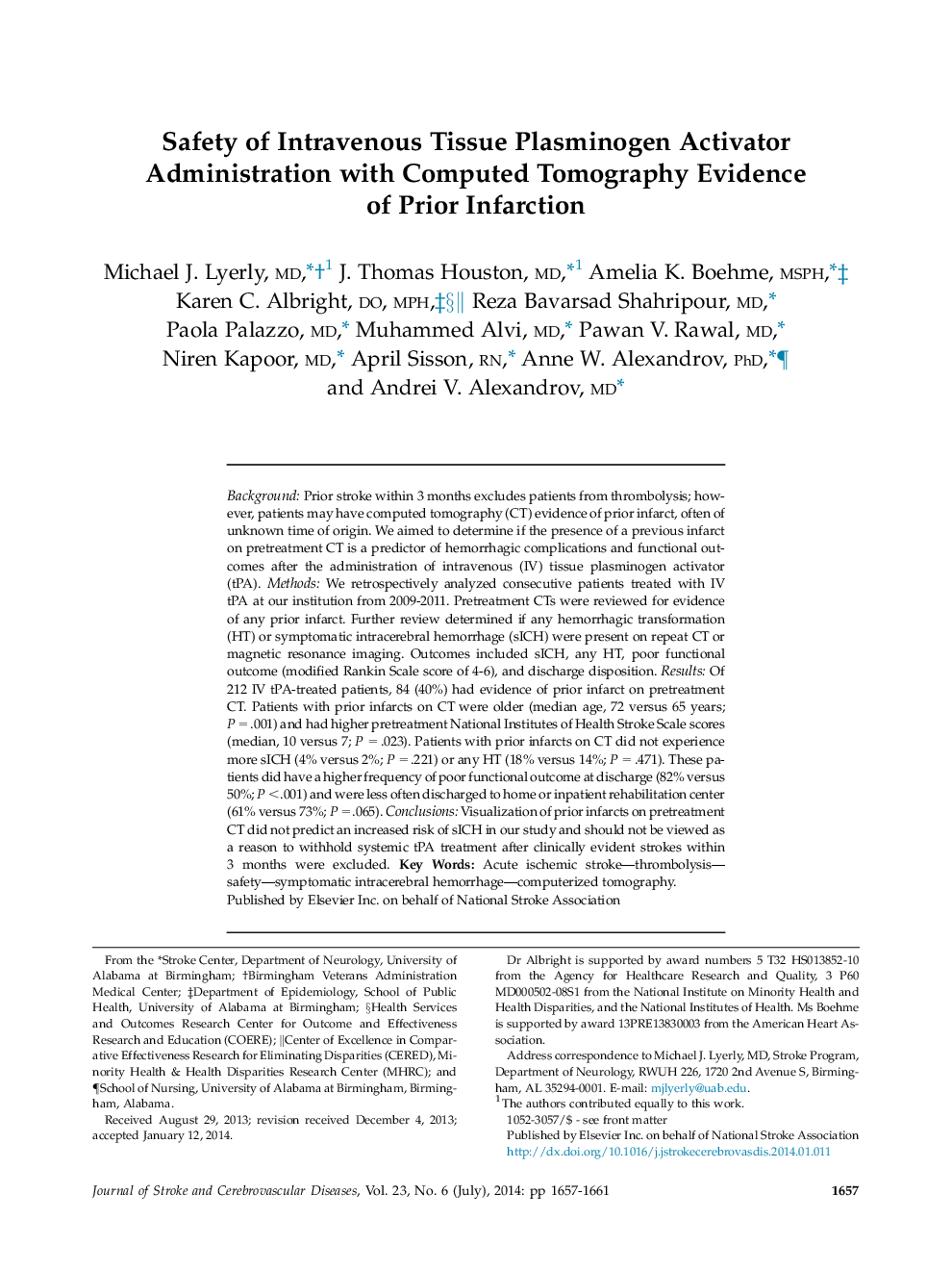| Article ID | Journal | Published Year | Pages | File Type |
|---|---|---|---|---|
| 5873346 | Journal of Stroke and Cerebrovascular Diseases | 2014 | 5 Pages |
BackgroundPrior stroke within 3Â months excludes patients from thrombolysis; however, patients may have computed tomography (CT) evidence of prior infarct, often of unknown time of origin. We aimed to determine if the presence of a previous infarct on pretreatment CT is a predictor of hemorrhagic complications and functional outcomes after the administration of intravenous (IV) tissue plasminogen activator (tPA).MethodsWe retrospectively analyzed consecutive patients treated with IV tPA at our institution from 2009-2011. Pretreatment CTs were reviewed for evidence of any prior infarct. Further review determined if any hemorrhagic transformation (HT) or symptomatic intracerebral hemorrhage (sICH) were present on repeat CT or magnetic resonance imaging. Outcomes included sICH, any HT, poor functional outcome (modified Rankin Scale score of 4-6), and discharge disposition.ResultsOf 212 IV tPA-treated patients, 84 (40%) had evidence of prior infarct on pretreatment CT. Patients with prior infarcts on CT were older (median age, 72 versus 65Â years; PÂ =Â .001) and had higher pretreatment National Institutes of Health Stroke Scale scores (median, 10 versus 7; PÂ =Â .023). Patients with prior infarcts on CT did not experience more sICH (4% versus 2%; PÂ =Â .221) or any HT (18% versus 14%; PÂ =Â .471). These patients did have a higher frequency of poor functional outcome at discharge (82% versus 50%; PÂ <Â .001) and were less often discharged to home or inpatient rehabilitation center (61% versus 73%; PÂ =Â .065).ConclusionsVisualization of prior infarcts on pretreatment CT did not predict an increased risk of sICH in our study and should not be viewed as a reason to withhold systemic tPA treatment after clinically evident strokes within 3Â months were excluded.
